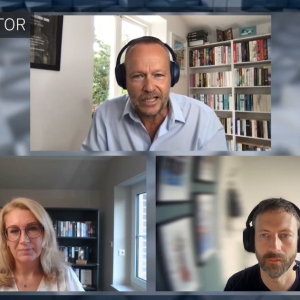We realized there was a market need for a fully integrated solution in the mid-market [with] processes that could span the company, said David Karlin, managing director of the Sage UK mid-market division.
He said that at the high end of the market, large enterprises with complex requirements can achieve end-to-end business process support but at a cost in terms of budget and middleware complexity, while at the small business end of the market, buyers with simple requirements can find a solution that broadly meets their needs and their limited budgets. However, he said the mid-market is characterized by companies with some of the complex requirements of a large enterprise in terms of the need for end-to-end processes without the need for scalability, but with budgets that have more in common with small businesses.
Sage 1000 is designed to deliver functionality and business processes that span the whole business at an affordable price. The starting price for the system is 9,000 pounds, which includes base-level financials and CRM capabilities, rising to 12,000 pounds if customers want commercial functionality module, and 15,000 pounds for base-level, commercial, and manufacturing functionality. It costs an additional 1,250 pounds for each concurrent user.
Although Sage 1000 is a new suite, it is has been built using the web-based architecture of Line 500 and also draws from Line 500’s established business processes for its manufacturing, finance, and distribution-related operations. The CRM functionality and processes are adapted from Sage’s MME CRM suite, which was originally the acquired Accpac CRM software. The level of technology and process reuse suggests that Sage 1000 will not carry the same level of risk of most version 1.x products.
But it is more than a conjunction of existing components. A major new addition is a workflow engine that enables processes to be built around a specific workflow. A set of APIs that enable integration with other applications and can be used as POP or web services have also been added. Sage is reluctant to jump onto the SOA bandwagon, preferring to concentrate on releasing functional applications and architecture, but Karlin said Sage 1000 provides functionality via a service bus so it has an SOA flavor in terms of how it makes the application available to others.
As well as integration and application functionality, Sage is also promoting Sage 1000 on usability grounds. Building on the MME interface, it features support for role-based user interfaces, with related support for user-defined security and data-access rights. Dashboards can be defined according to user role but, in addition, individual users can define their own dashboards. The browser-based interface has many of the hallmarks of modern interfaces, including features enabled by Ajax technologies, although it uses Line 500 technology rather than Ajax.
Even though the suite is a positive and much-needed addition to the Sage portfolio, it still has weaknesses. It is available as an on-premise deployment only, although Karlin said the browser-based interface means it could be deployed as a managed service but there are no current plans to offer an on-demand version. We have yet to be convinced that there is enough demand [for an on-demand suite] right now, he said. The situation has changed regarding CRM, but I am not convinced [that it has changed] in the integrated suite world. Sage 1000 also lacks mobile support.
In line with its strategy of providing local solutions, Sage 1000 is only available in the UK via its channel partners.






